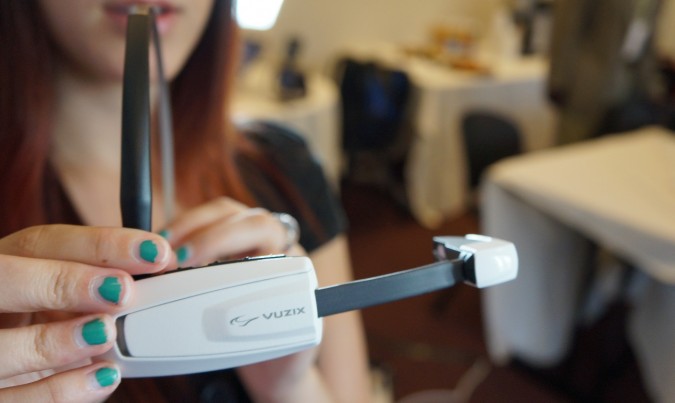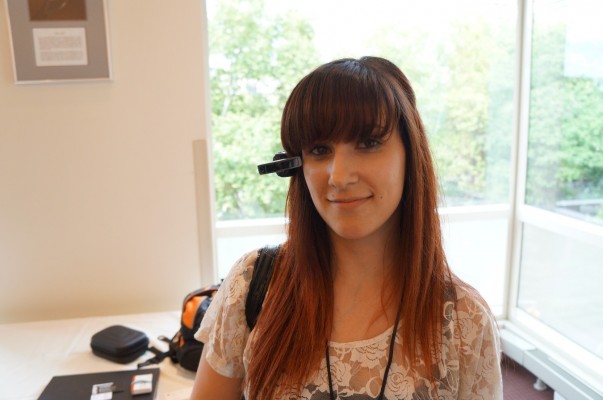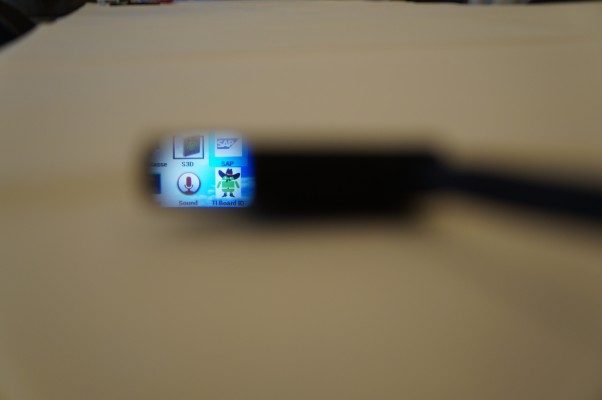Vuzix M100 Smart Glasses: Hands-On With a Google Glass Alternative
Google Glass may be generating buzz in the wearable tech space, but Google is far from the only company to dive into the heads-up display market. Vuzix, which has been working with augmented reality technology since 1997, is gearing up to launch its flagship M100 headset—a wearable Android device with nearly the same hardware as Google Glass.
The Vuzix M100 is only available for developers at the moment, but the company has finalized the design that will hit the consumer market near the end of 2013. The device is essentially a mini-computer with a dual-core 1GHz TI-OMAP 4403 processor, which is the same chip you’ll find in Google Glass and older Android tablets such as the Samsung Galaxy Tab 2. It can function as a standalone wearable computer by using Wi-Fi or attach to your Android or iOS smartphone via Bluetooth. The M100 runs on Android 4.0 Ice Cream Sandwich, which is a few generations behind the newest version of Android 4.3 Jelly Bean.
MORE: Google Glass Alternative Promises Better Display, Lower Price
The body comes with a rubbery arm attached to a mini WQVGA display capable of 720p video playback that sits in the upper right hand corner of your line of vision. The miniature computer and display are attached to a thin adjustable headband that rests at the top of your head.

Unlike Glass, the Vuzix M100 comes with a speaker on the inside of the headband that rests near your ear, which is different than the bone conduction technology used in Google’s device. There’s 4GB of onboard storage as opposed to Google Glass’ 16GB, but Vuzix has added a microSD card slot for expanding your storage.
The heads-up display supports voice commands and also comes with buttons that allow you to scroll through menus, launch apps, snap photos and make selections. Eventually the Vuzix M100 will support gesture control as well, which would let users navigate applications by motioning at the virtual screen in front of them.

The Vuzix M100’s headband felt comfortable and secure when placed on our head, although we had to make some minor adjustments to its length for the display to stay firmly in place. Vuzix says that the final build will come with a sturdier headpiece to prevent this type of issue. Once the display was situated in the corner of our right eye, we looked through a transparent rendering of the device’s app home screen. We didn’t find this to be distracting while looking around the room or speaking with other guests, since the see-through image is just an unobtrusive overlay in your line of vision.
Stay in the know with Laptop Mag
Get our in-depth reviews, helpful tips, great deals, and the biggest news stories delivered to your inbox.

The most impressive feature we experienced when using the M100 was its ability to render two-dimensional images in a 3-D augmented reality fashion. For example, we used an app through the M100 that depicted a 2-D picture of the solar system as a floating 3-D hologram before our eyes. As the image was moved, the virtual solar system shifted in sync to provide alternate 3-D views of the planets.
When peering through the Vuzix M100’s camera, we found ourselves slightly squinting to shoot images through the tiny display. There was some noticeable lag when panning around the room, but the camera was responsive and accurate overall.
The Vuzix M100 is currently selling for around $1,000 for developers, but it will fall in the $400 to $500 price range when it hits the consumer market. Google hasn’t specified how much its Glass headset will cost for consumers, but the developer Explorer Edition is priced at $1,500.

